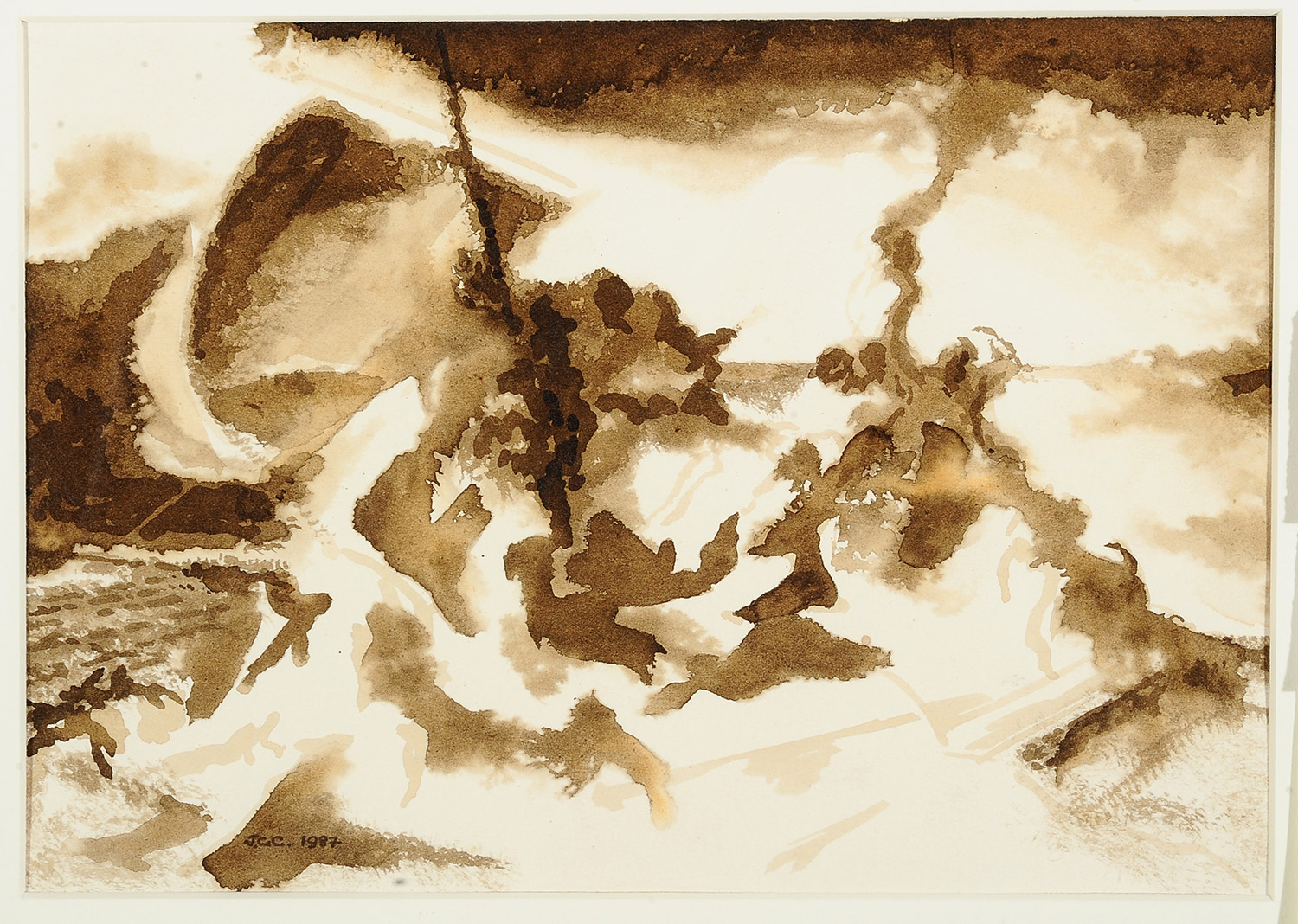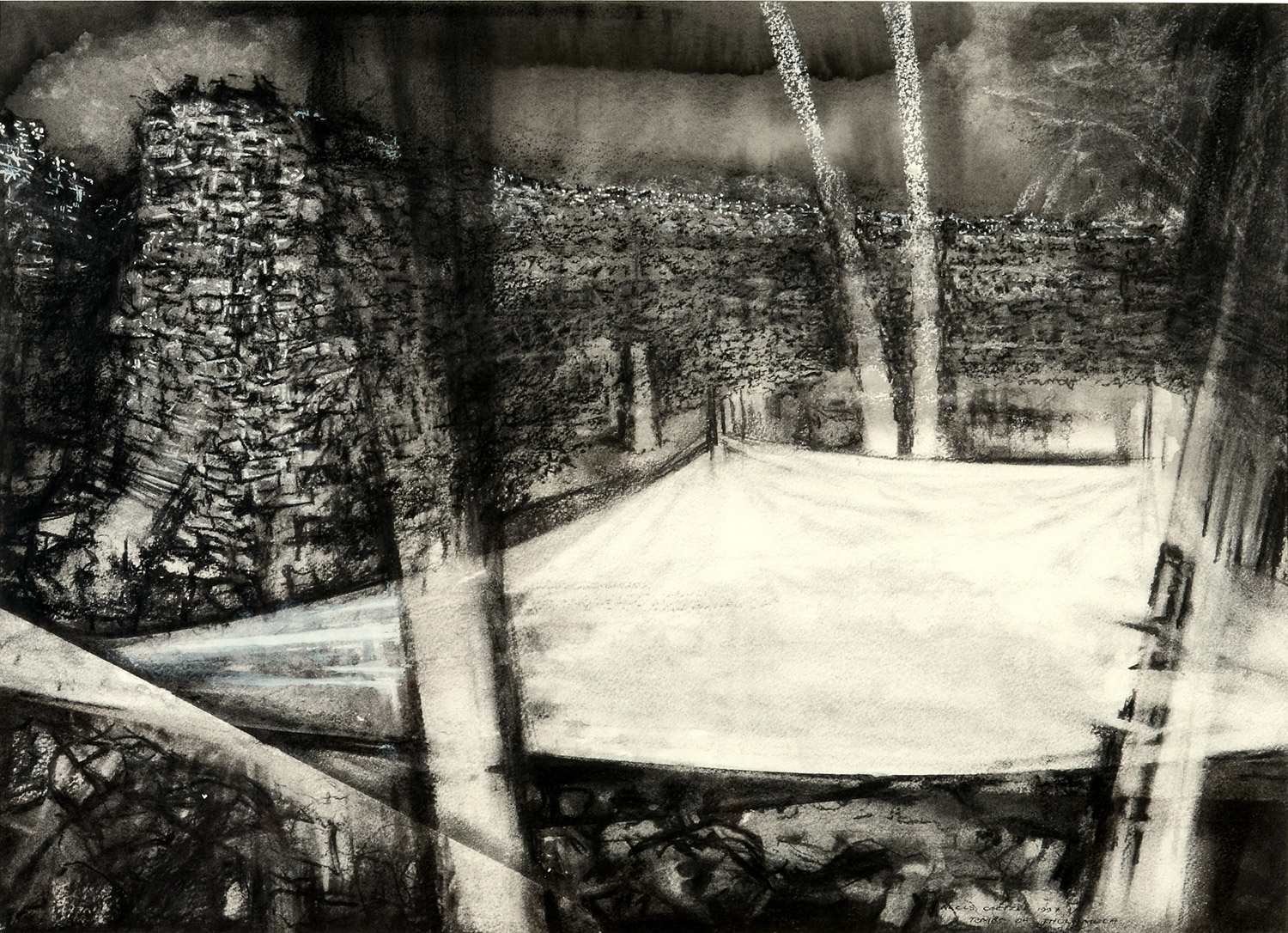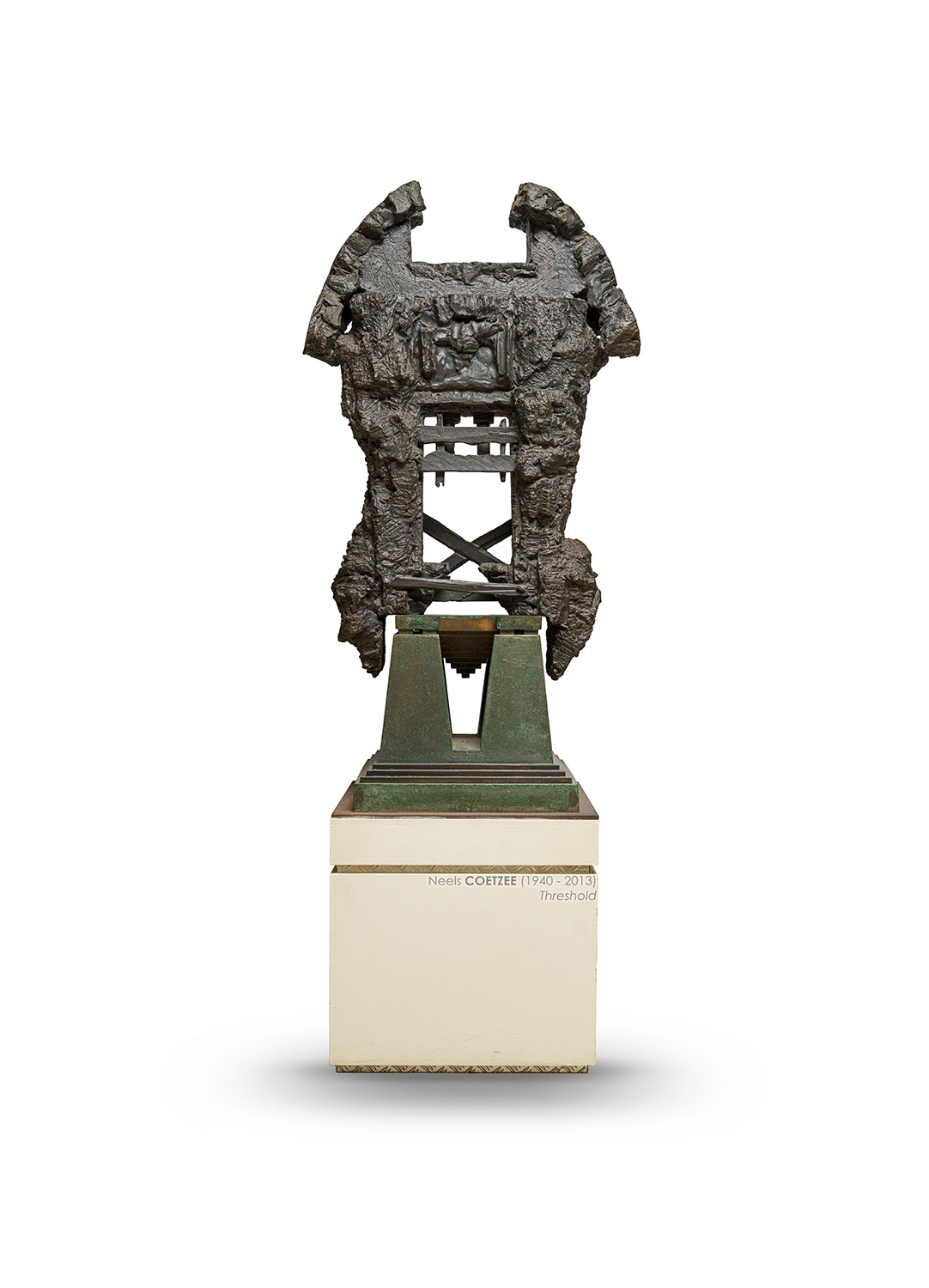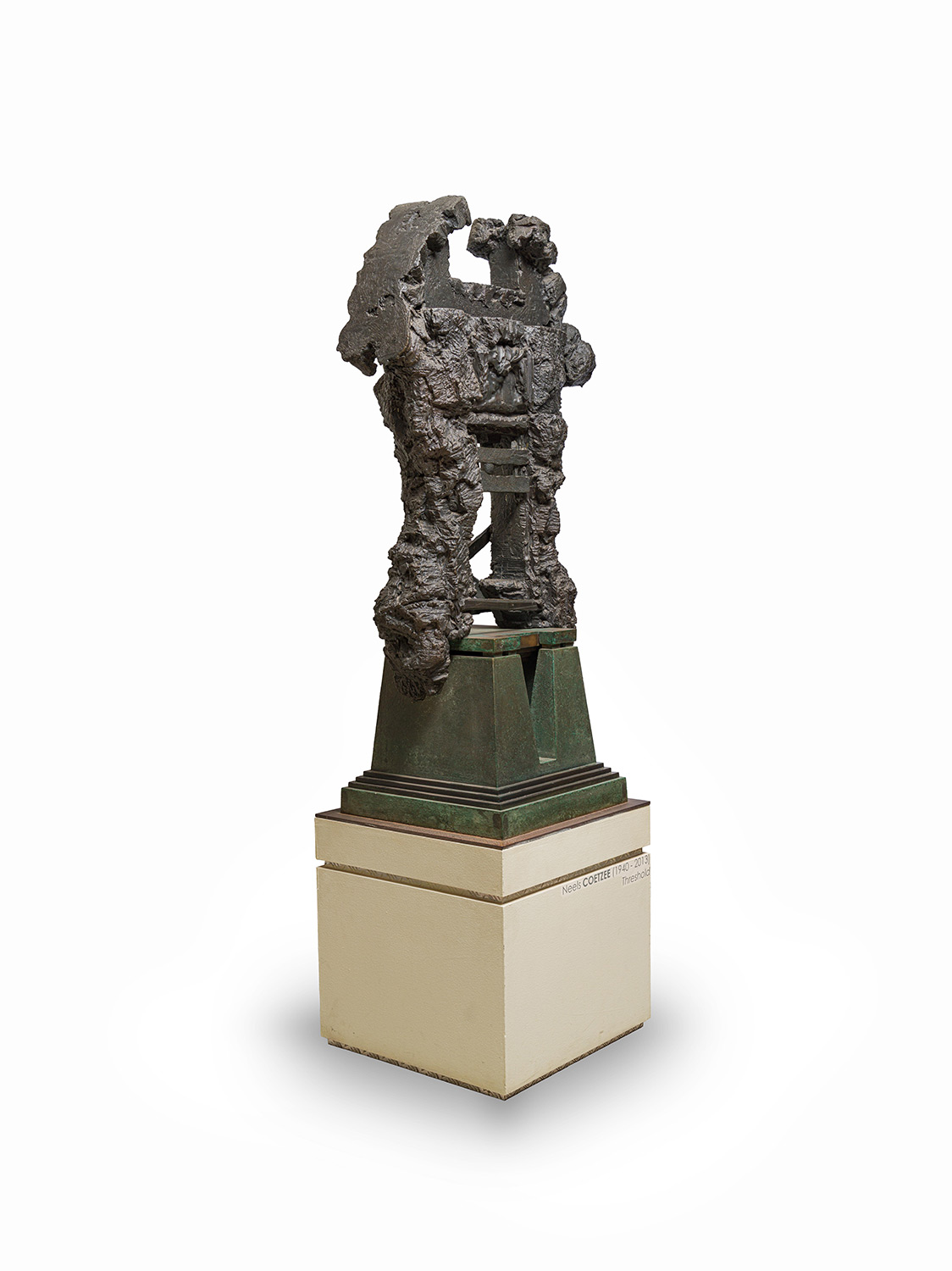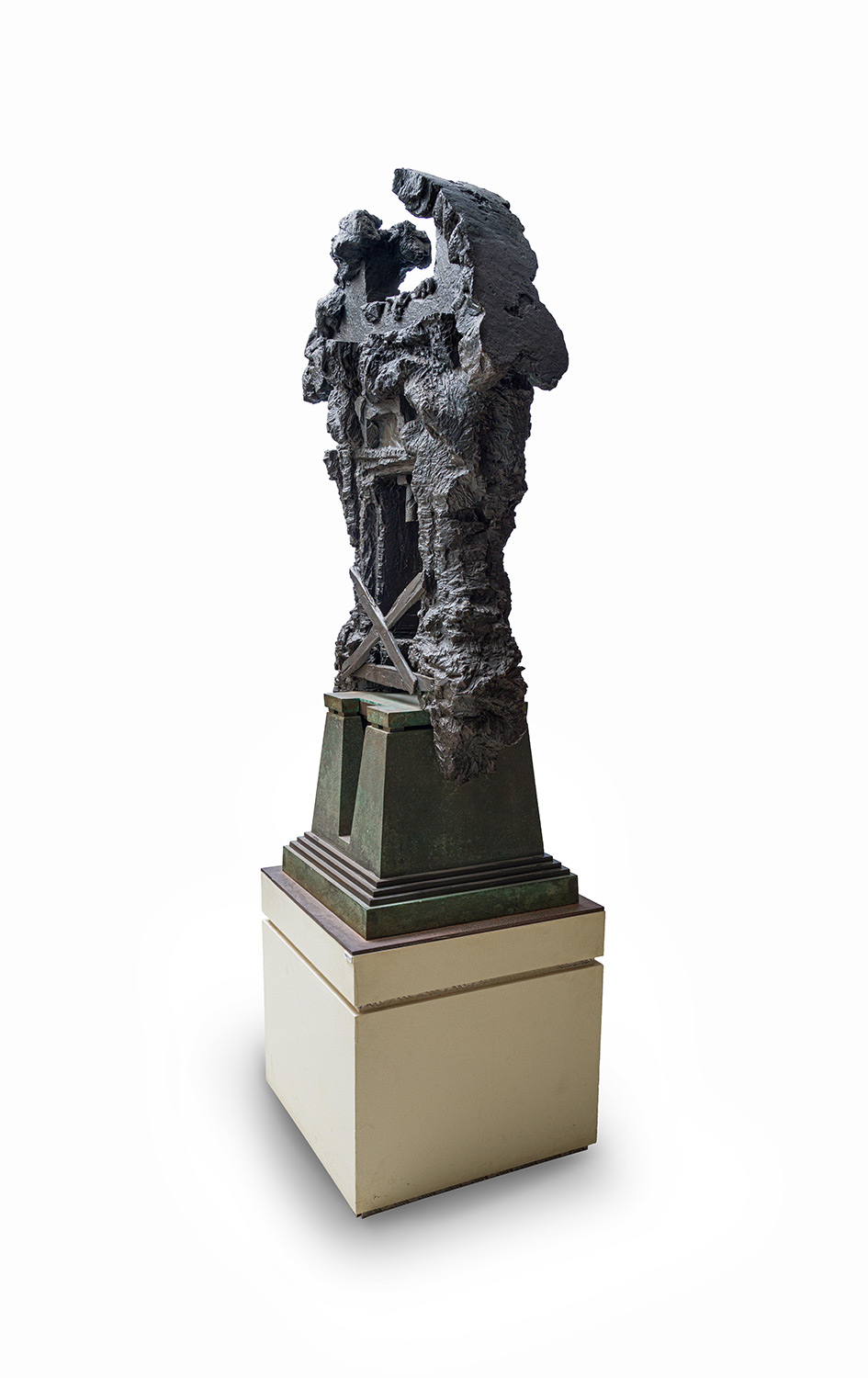‘NEELS’ JOHANNES CORNELIUS COETZEE (1940 – 2013)
BIOGRAPHY
Johannes Cornelius ‘Neels’ Coetzee was an eminent sculptor and a much-loved teacher, mentor and innovator. He also produced magnificent drawings, independent from his sculptures.
Born in Bethal, Coetzee was an only child who grew up on a farm. He graduated from the University of Natal (now the University of KwaZulu-Natal), Pietermaritzburg in 1963 with a BA in Fine Arts and Philsophy. He went on to study at the Hornsey College of Art (1963–1964) and the Koninklijke Hogere Instituut voor Shone Kunsten in Antwerp (1965).
In 1965, he completed a bronze casting course at the Royal College of Art in London. He also received training at several foundries in Europe where he developed his craft, which sustained him throughout his career.
Coetzee returned to South Africa in 1967 and taught sculpture and drawing at the Johannesburg and Pretoria Technikons. In 1972, he was appointed a lecturer at Wits University and, with his arrival, sculpture was introduced as a major discipline, including the introduction of bronze casting as part of the curriculum. His tenure at the University lasted until 1997.
Coetzee’s work interrogated his unease about spirituality and religion, suffering and injustice. These preoccupations led him to philosophy and theology, and themes of life, death and transformation permeate his work.
It was an encounter with a skull at the Wits Medical School in 1976 that inspired his lifelong interest in the skull as a sculptural trope. In the University’s School of Anatomy, Coetzee found a female skull with an abnormality. This irregularity reflected the flaws he saw in life. He produced a wax-cast of the skull, immersed it in water, re-worked the cool wax. Coetzee observed: ‘The skull – because the head is vulnerable, anatomically the most essential, and the most revealing of the emotions.’ Years later, Wits would commission Coetzee to create a temporary installation of a bronze sculpture on West Campus. Bier, a hollowed skull, was part of his original Skull series that began in the 1970s.
Coetzee was bed-ridden for the last six years of his life and unable to produce art.
Crucible was the central and titular work in Coetzee’s posthumous retrospective exhibition held at Everard Read’s Circa Gallery in 2015. The exhibition traced his oeuvre over four periods: the Space Frame series (1960s–early 1970s), the Skull series (1970s), the Avçilar series (the namesake of a shrine in Turkey), and Measure – the latter a posthumous extension of his work in line with his vision to see his skull sculptures at a larger scale.
Conceptualised as a ‘peace monument’, the key feature of Crucible is its composition from melted-down AK47s. The Russian automatic rifle was the emblematic weapon of the armed struggle against the apartheid regime. This work is currently on loan to the Apartheid Museum, where it can be viewed.
The melting down of the rifles to form the shrine-like monument is both a comment on a more hopeful future for the country in the post-apartheid era, and a reference to the sculptural process of melting and refashioning materials into new objects and meanings.
Art historians like Rankin, Doepel, Skawran and Martienssen all wrote about Coetzee’s work, which is held in several major private and museum collections. Public commissions include those by the University of Cape Town, Wits University, the Johannesburg Art Gallery and the Institute for Democracy in Africa (IDASA).


